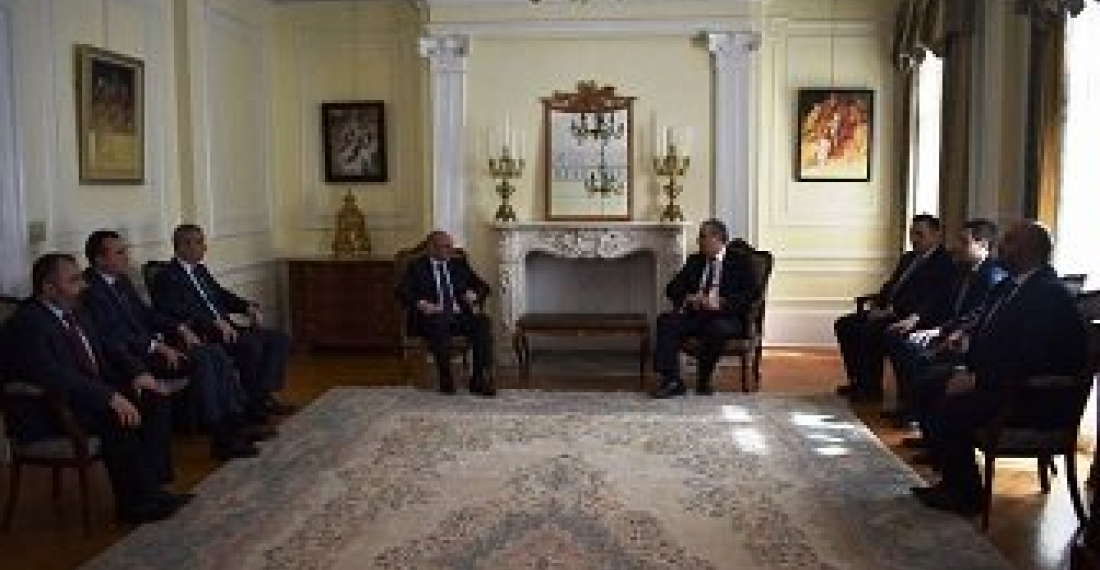The president of the self-declared Nagorno-Karabakh Republic, Bako Sahakian has arrived in Washington DC on what has been described as a "working visit". On Tuesday (13 March) Bako Sahakyan visited the Embassy of the Republic of Armenia in Washington, and met with the ambassador of Armenia to the United States, Grigor Hovhannissian and the diplomatic staff at embassy. A range of issues related to the cooperation between the USA and Armenia and nagorno-Karabakh were discussed.
"President Sahakyan stressed the importance of close cooperation between Artsakh, Armenia and the Diaspora, underlining that it was one of the crucial factors for successful implementation of the scheduled programs", the website of the NKR de facto authorities stated.
Nagorno-Karabakh Republic is not recognised by any state, and Bako Sahakyan's Washington visit was criticised by Azerbaijan.
In an article in the journal National Interest, published on the eve of the visit, the former US Ambassador to Armenia, John Evans said that
"This week, the democratically-elected president of Artsakh, Bako Sahakyan, will visit Washington. He will not be received by the administration, in part because the United States is silent on the question of whether Artsakh should eventually be independent of Azerbaijan, to which it was allocated by Josef Stalin in 1921. Washington does not recognize Artsakh-in fact no country yet does-but President Sahakyan's predecessor who visited in 1999 and 2002 met with State Department officials at the working level, and there is an unofficial representative of Nagorno-Karabakh/Artsakh resident in Washington. For this visit, Sahakyan will have to be content with meetings on the Hill and a private lunch at the Center for the National Interest."
The former American diplomat added:
"It is time for the international community to welcome the Republic of Nagorno-Karabakh-Artsakh-into the community of nations. As the deputy foreign minister of Artsakh, Armine Aleksanyan, put it recently at the European Parliament, "Karabakh is a country, not a conflict." The people of Artsakh just want to live their lives in peace and freedom. Even though the status of the Republic of Artsakh has not yet been finally determined, the people of Artsakh possess, and should enjoy, the same rights as all the rest of us, and ought not to be quarantined by the rest of humanity."
source: commonspace.eu with agencies
photo: Bako Sahakian, President of the self declared nagorno-Karabakh Republic at the Embassy of Armenia in Washington DC on Tuesday, 13 March, at the start of a visit to the United States.






